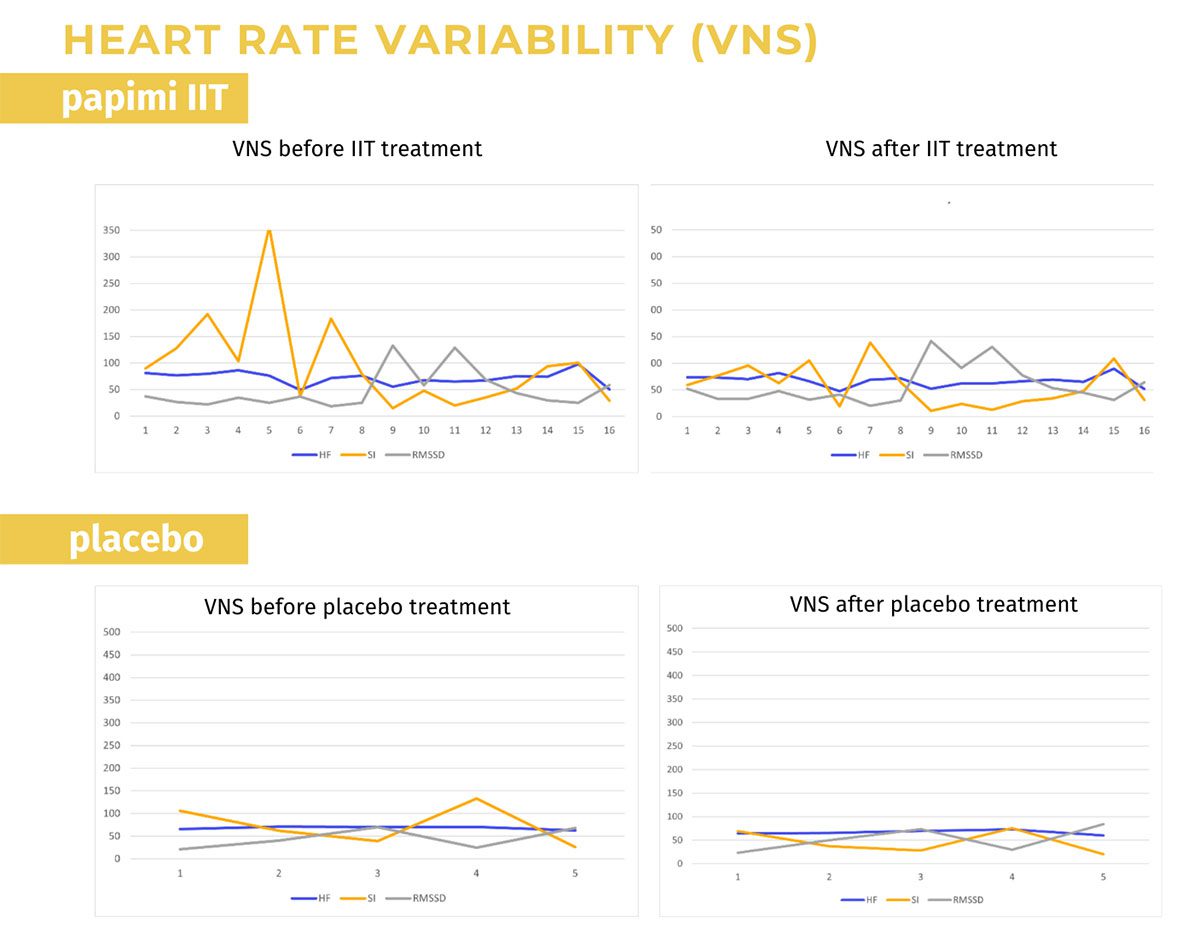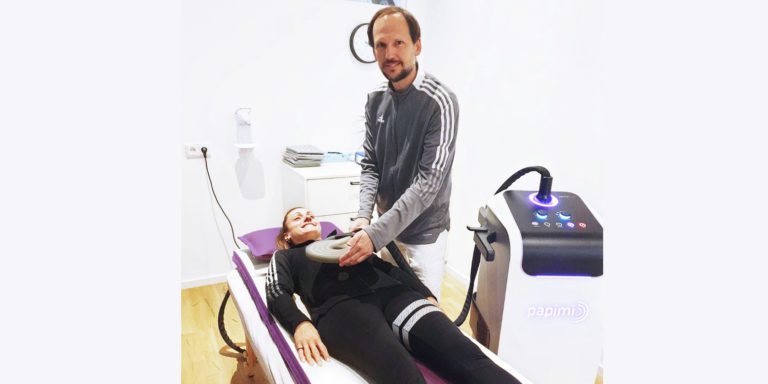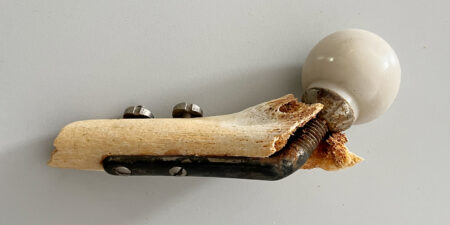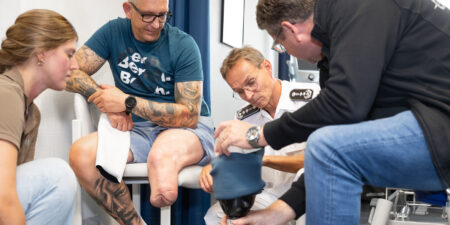„No winner believes in chance.“ – this very popular quotation in high-performance sport by Friedrich Nietzsche has at the very least one element of truth to it. If the body is to perform, if this performance is to be measured head to head with other ideally conditioned participants, then every millisecond, every centimetre and above all every measure taken beforehand to optimise and regulate the entire body counts – the supreme discipline of integrative medicine.
Integrative medicine not only means looking at the human body as a whole and understanding and using complex regulatory interactions, but also examining all available methods completely objectively and placing the therapeutic context and the patient or athlete entrusted to us at the centre of the therapy plan. The methodology behind the creation of such a therapy plan as well as the way in which different therapy approaches, methods, medications and training sessions can intertwine and lead to an amplification of the result are explained in this article using the example of papimi Ion Induction Therapy (IIT).
Ion-Induction-Therapy (IIT)
A healthy cell needs sufficient cell membrane voltage (approx. –70 mV to –90 mV) to maintain its regulatory processes. If the voltage drops, this can for example result in pain, inflammation, oedema or ischaemia. Weakened body cells are stimulated by the ion induction field and raised to their healthy membrane potential. The cell can resume regulatory processes, exchange trace elements and produce corresponding energy molecules.
In the field of PEMF (Pulsed Electromagnetic Frequency) there are already numerous studies and observations that prove a positive influence of the so-called Ion-Induction on the organism. In particular, the effects in the areas of pain reduction and regulation in wound healing and anti-inflammatory processes have been described. In order to fully exploit the effect of IIT, it is important to pay attention to the power (at least 30 kV), the shortest possible pulse duration (less than 60 µs), the widest possible bandwidth (200 KHz – 300 MHz) and the most unique frequency spectra (spark gap). Different applicator types (ring, spiral whole body) allow additional combination scenarios, as well as targeted regulative therapy approaches.
Frequent indications for which IIT is used in sports are swelling, bone marrow oedema, optimised wound healing and pain relief. The synergetic effect with other therapeutic methods should not be neglected, as IIT is very well suited for “conditioning” the cells and regulating biochemical processes. Once the body is in the ideal range, other therapy approaches such as neural therapy, osteopathy, physiotherapy or infusion therapies can work more efficiently.
Differences and parallels between professional athlete and patient
Although the physiology of competitive athletes and “average” patients may not differ at first glance, there are of course clear differences in the therapy plan in practice. Above all, the desire to return to the usual performance as quickly as possible is reflected in the more frequent intervals and sometimes also in the longer duration of application. In our rehabilitation process, for example, IIT is used daily for a cruciate ligament patient with a targeted local application on the operated knee joint, in the area of the regio inguinalis (ipsilateral), the M. Iliopsoas (bs.) and the regio lumbosacralis for a total of 30 minutes. In addition to a 30-minute intensive treatment of the symptoms (cruciate ligament rupture, muscle fibre tear, etc.), a competitive athlete often receives a second intensive local treatment and/or a treatment with the full-body applicator, which is primarily intended to support the regeneration and regulation of the entire metabolism.
The Therapy Plan – Integrative & Individual (Tab.)
As with any regulatory therapy, medical or therapeutic expertise is of great importance in IIT in order to achieve optimal results. The implementation of the applications can be delegated, but the course of the treatment series should be assessed by appropriately experienced professionals and adjusted if necessary.For example, one treatment a week may be sufficient for a CFS patient, whereas repeated treatments may overstrain the body’s regulatory powers. With migraine patients, on the other hand, a cautious approach has proven successful – with regular applications twice a day, at the beginning for 10 minutes at low intensity and at a greater distance from the spiral applicator to the body. This avoids stronger initial/regulatory reactions and thus increases the patient’s compliance. In athletes, these factors play a rather subordinate role, as they usually have a good regulatory ability. Therefore, IIT can and should normally be used daily in sports, ideally also several times a day.

Treatment & combination options
In addition to the traditional local application for orthopaedic complaints or sports injuries, IIT can be combined with almost all regulatory therapies. For example, a chronic pain patient who does not react successfully to traditional acupuncture can be treated by lying on the full-body applicator while needling, thus breaking through the patient’s regulatory rigidity more quickly. As a support for the elimination of toxins, IIT is fundamentally suitable – but more efficient in combination with other detoxifying measures such as infusion therapies (e.g. chelation therapy) or oral detox programmes. IIT is fundamentally useful as a pre-treatment for physiotherapeutic or osteopathic treatments, as the tissues are “opened” in advance. This makes it easier to release spinal blockages, treat trigger points more efficiently or treat massive myofascial tensions more simply and gently. Last but not least, measures to regulate the vegetative nervous system benefit from IIT – for example, the full-body applicator can be used before craniosacral therapy or the situation of the vegetative system can be assessed in the context of an HRV (heart rate variability) measurement and optimised through IIT. Especially in competitive sports, this can ofcourse be optimally used for regeneration purposes.

Evaluation of the overall health status & performance level
In addition to the many possible applications in therapy, IIT has another special option – the so-called “screening”. Here, the body is “scanned” from head to toe using a spiral applicator – the practitioner guides the applicator over the various body regions of the patient or athlete at a distance of a few centimetres. Stressed regions are revealed and thus it is determined which treatment strategy should be chosen. If a region of the body is stressed, the patient reports feeling pinpricks or excessive fasciculation. This is of course extremely helpful in the initial assessment, as an optimal integrative treatment plan can subsequently be drawn up and, in addition, the patient/athlete recognises where his or her “weak points” lie. The screening can of course be carried out at regular intervals or before each use – especially in the context of injury prevention in sports.
In this context, it can also be mentioned that in the sense of objective evaluation of the available methodologies the Next Level Academy conducted a mini-study on IIT (among other things) and found an increased micronutrient uptake into the blood as well as an increased Ca resorption from the serum into the bones. Thus, in addition to the acute treatment of injuries and traumas, IIT is excellently suited for optimising performance, in the area of injury prophylaxis and for controlling cellular and vegetative regeneration processes in competitive sports.
Autoren
ist Heilpraktiker, Osteopath und Physiotherapeut. Er ist Leiter Naturheilpraxis und Physiotherapie am Nextlevel Trainings- und Therapiezentrum in Schweinfurt. Seine Schwerpunkte sind Mitochondrien, Stoffwechsel, Schmerztherapie sowie Bewegungsapparat.




